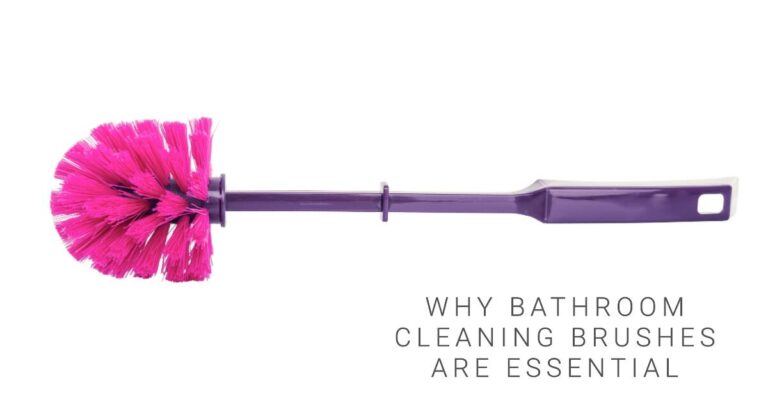Bathrooms are one of the most humid places in your home, which makes them a perfect breeding ground for mold and mildew.
Excess moisture can cause damage to your bathroom walls, ceilings, and floors, as well as create an unpleasant odor.
In this article, we will explore how to reduce moisture in the bathroom effectively.
Follow the Below Method to Reduce Moisture in the Bathroom
Ventilation
Ensuring proper ventilation is the first and most important step in reducing bathroom moisture.
When you shower or bathe, moisture accumulates in the air, and without proper ventilation, it can linger for hours, promoting the growth of mold and mildew.
You can improve ventilation by installing a bathroom exhaust fan that vents to the outside.
Ensure the fan is of the appropriate size for your bathroom and is vented to the outside, not just into the attic or crawl space.
Reduce Shower Time
The longer your showers, the more moisture you generate. Try to keep your showers short and sweet. Limit your time to 10 minutes or less.
Reducing your shower time will minimize the amount of steam and moisture that escapes into the air.
If you have to take a longer shower, consider opening the bathroom window or turning on the exhaust fan to help dissipate the steam.
Fix Leaks
Leaking pipes, faucets, and toilets can cause excess moisture in your bathroom.
Check for leaks regularly and fix them promptly. A small leak can lead to significant damage if left unchecked.
If you are unsure if you have a leak, check your water meter before and after two hours when no water is being used.
If the meter changes, you may have a leak.
Wipe Down Surfaces
After taking a shower or bath, wipe down the surfaces in your bathroom, including the walls, floors, and shower doors.
This will help to remove any excess moisture that may have accumulated.
Use a squeegee or towel to remove the moisture, then hang the towel outside the bathroom to dry.
Install a Dehumidifier
If you live in an area with high humidity, installing a dehumidifier can help to reduce the moisture levels in your bathroom.
A dehumidifier draws moisture from the air and collects it in a tank.
Make sure to empty the tank regularly, as it can fill up quickly.
Use Bathmats
A simple way to reduce moisture in your bathroom is to use bathmats.
Bathmats can help to absorb excess water, preventing it from accumulating on your bathroom floor.
Make sure to wash your bathmats regularly to prevent the growth of mold and mildew.
Open Windows and Doors
Opening windows and doors in your bathroom can help to reduce moisture levels by increasing airflow.
If you do not have a window in your bathroom, consider installing a vent or using a portable fan to improve airflow.
Seal Cracks and Gaps
Sealing any cracks or gaps in your bathroom can help to prevent moisture from seeping into your walls and floors.
Check for cracks around windows, doors, and vents, and use caulk or sealant to fill them.
Use Water-Resistant Paint
Water-resistant paint is a great way to prevent moisture from damaging your bathroom walls.
Look for paint specifically designed for bathrooms, as it will be more mold-resistant and mildew-resistant.
Don’t Forget to Clean
Regular cleaning is essential to prevent the growth of mold and mildew in your bathroom.
Use a cleaning solution specifically designed for bathrooms and clean surfaces, including shower walls and floors, at least once a week.
Key Takeaways
- Proper ventilation is crucial to reduce moisture in your bathroom. Consider installing a bathroom exhaust fan that vents to the outside.
- Reduce shower time to minimize the amount of steam and moisture that escapes into the air.
- Check for leaks regularly and fix them promptly to prevent excess moisture.
- Wipe down surfaces in your bathroom after taking a shower or bath to remove any excess moisture that may have accumulated.
- Use bathmats to absorb excess water and prevent it from accumulating on your bathroom floor.
- Regular cleaning is essential to prevent the growth of mold and mildew in your bathroom.
- Sealing any cracks or gaps in your bathroom can help to prevent moisture from seeping into your walls and floors.
- Use water-resistant paint to prevent moisture from damaging your bathroom walls.
- Open windows and doors to increase airflow and reduce moisture levels.
- Consider installing a dehumidifier if you live in an area with high humidity.
Conclusion
Reducing moisture in your bathroom is essential for preventing mold and mildew growth and your health.
Excess moisture can cause respiratory problems, allergies, and other health issues.
Following these tips, you can keep your bathroom dry, clean, and mold-free.
Don’t forget to perform regular maintenance to ensure the long-term health of your bathroom.


